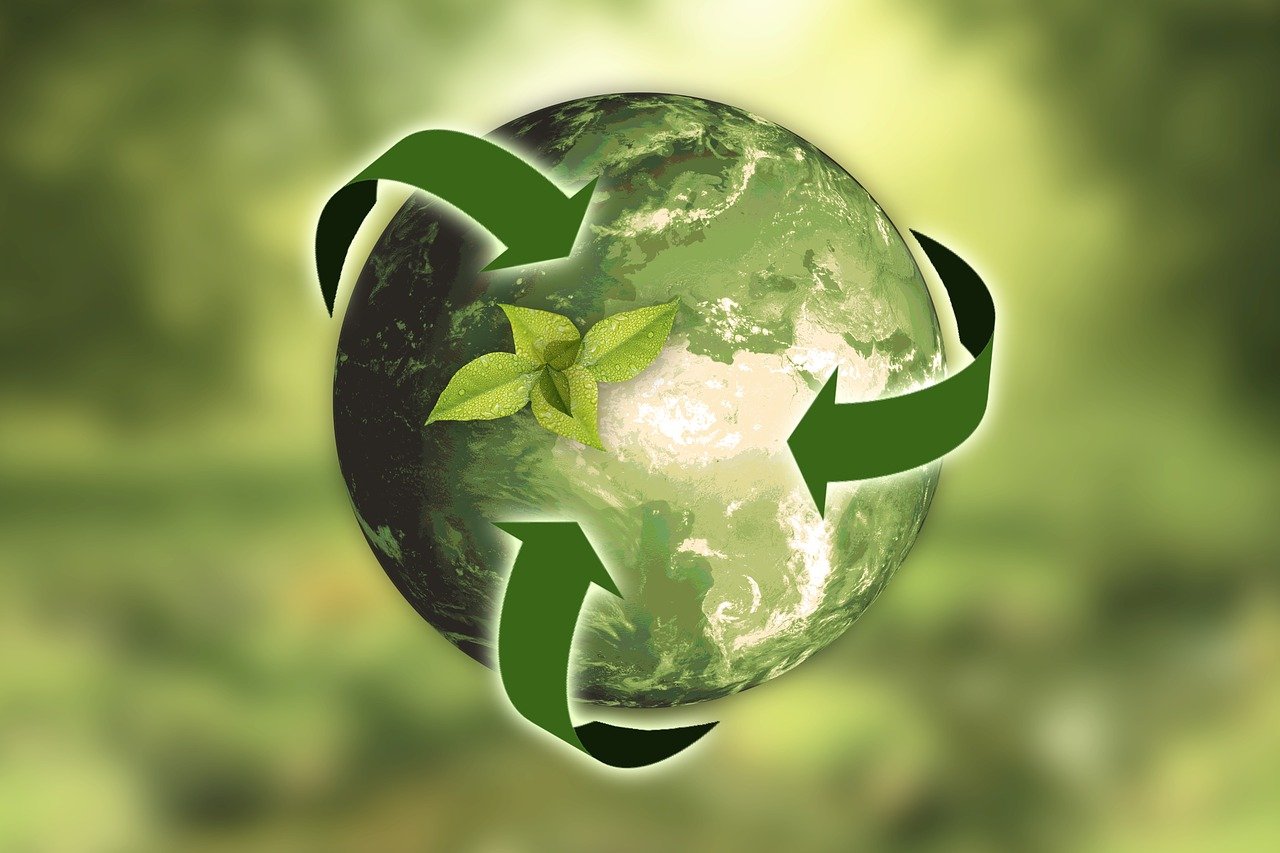In our ever-growing quest to sustain and protect our planet, it’s heartening to know that a number of dedicated organizations are leading the charge for environmental justice. In our article, “What Are The Most Influential Environmental Advocacy Groups,” we delve into the tireless efforts and significant impact of the most prominent environmental advocates. These groups—ranging from global giants with wide-reaching initiatives to grassroots movements with passionate local influence—are at the forefront of pushing for meaningful change. By harnessing the power of education, legislative action, and community involvement, these organizations are not just inspiring us to make a positive difference, but showing us all that a greener, healthier future is within our reach. What are the most influential environmental advocacy groups? This question might have crossed our minds as we witness increasing concerns about our planet’s health. As we dive deep into this topic, we’ll explore the key players leading the efforts to protect and preserve our environment. Whether we’re seasoned environmentalists or just becoming aware of our planet’s challenges, understanding these advocacy groups can inspire us and guide us in making a meaningful impact.

Understanding Environmental Advocacy Groups
Environmental advocacy groups are organizations that aim to protect the environment through activism, education, policy-making, and other strategies. They work on various issues such as climate change, pollution, conservation, and sustainable development. By raising awareness and influencing public policies, they play a crucial role in shaping a sustainable future.
What Defines Influence?
Before identifying the most influential groups, it’s essential to understand what makes an advocacy group influential. It’s not just about the size or the budget; it’s also about their ability to drive change, advocate for policies, and rally public support. Influence can come in many forms:
- Policy Impact: Ability to influence legislation and environmental policies.
- Public Awareness: Success in raising awareness and educating the public.
- Global Reach: Extent of their influence on an international scale.
- Scientific Contributions: Contributions to environmental research and scientific understanding.
- Activism Success: Successful campaigns and grassroots movements.
Criteria for Selection
In discussing the most influential environmental advocacy groups, we’ll focus on those that have made significant strides in these areas. We’ll consider their history, mission, accomplishments, and ongoing efforts to advance environmental protection.
The Most Influential Environmental Advocacy Groups
Let’s delve into the standout environmental advocacy groups making waves globally.
1. Greenpeace
Greenpeace, founded in 1971, is known for its direct action and campaigning. Its mission is to “ensure the ability of the Earth to nurture life in all its diversity.”
- Key Areas of Focus: Climate change, deforestation, overfishing, commercial whaling, and pollution.
- Notable Achievements:
- Campaign to stop nuclear testing.
- Efforts to halt commercial whaling.
- Promoting renewable energy solutions worldwide.
- Methodology:
- Direct action campaigns.
- Influential lobbying and policy advocacy.
- Public awareness through media and online platforms.
2. World Wildlife Fund (WWF)
Established in 1961, WWF works towards conservation and reducing human impact on the environment. Their slogan, “For a Living Planet,” epitomizes their commitment.
- Key Areas of Focus: Wildlife conservation, climate change, freshwater, forests, and oceans.
- Notable Achievements:
- Support in establishing protected areas such as natural parks and reserves.
- Successful conservation programs for endangered species.
- Initiatives for sustainable development and climate resilience.
- Methodology:
- Scientific research and policy advocacy.
- Community engagement and education.
- Strategic partnerships with businesses and governments.
3. Sierra Club
Founded in 1892 by legendary conservationist John Muir, Sierra Club is one of the oldest and most influential environmental organizations in the United States.
- Key Areas of Focus: Wildlife conservation, clean energy, climate policy, and reducing pollution.
- Notable Achievements:
- Major role in establishing the National Park Service.
- Strong advocacy for the Clean Air Act and Clean Water Act.
- Successful Beyond Coal campaign leading to the closure of numerous coal plants.
- Methodology:
- Grassroots activism.
- Legal strategies and litigation.
- Legislative advocacy and community education.
4. Natural Resources Defense Council (NRDC)
Since its formation in 1970, NRDC has committed to safeguarding the earth’s natural resources and ensuring a healthy environment for all.
- Key Areas of Focus: Climate change, energy, oceans, water, health, and wildlife.
- Notable Achievements:
- Legal victories in protecting clean air and water.
- Advocacy for action on climate change and renewable energy policies.
- Cutting-edge scientific research and public health initiatives.
- Methodology:
- Legal actions and policy advocacy.
- Scientific research and expert analysis.
- Public education and community partnerships.
5. Friends of the Earth
A global network with its roots in the 1969 anti-nuclear movement, Friends of the Earth is known for its eco-justice and human rights approach to environmentalism.
- Key Areas of Focus: Climate justice, food sovereignty, biodiversity, and economic justice.
- Notable Achievements:
- Campaigns against large-scale destructive projects.
- Advocacy for equitable climate policies and sustainable food systems.
- Protecting biodiversity and promoting alternatives to conventional economic models.
- Methodology:
- Advocacy and policy influence.
- Community-driven campaigns.
- Global networking for grassroots mobilization.
6. Environmental Defense Fund (EDF)
EDF, created in 1967, is known for its pragmatic approach to solving environmental issues by finding market-based solutions.
- Key Areas of Focus: Climate change, oceans, ecosystems, and health.
- Notable Achievements:
- Pioneering cap-and-trade programs for emissions reduction.
- Promoting sustainable fishing practices.
- Protecting critical habitats and reducing chemical pollution.
- Methodology:
- Market-based solutions.
- Scientific innovation and technological advancements.
- Strategic partnerships with businesses and policymakers.

How These Groups Make a Difference
Policy Impact: Shaping Laws and Regulations
One of the primary avenues through which these organizations exert influence is by shaping environmental laws and regulations. By lobbying, engaging in legal battles, and working with policymakers, they drive changes that protect the environment. For instance:
- Greenpeace: Influencing international agreements on deforestation and ocean protection.
- NRDC: Legal victories in cases related to clean air and water.
- EDF: Development and implementation of market-based emissions trading systems.
Raising Public Awareness: Informing and Mobilizing People
Public awareness is another critical aspect. These organizations use various strategies to inform and mobilize people:
- Media Campaigns: Television ads, documentaries, social media, and more.
- Educational Programs: School initiatives, workshops, online courses, and publications.
- Events and Protests: Organizing large-scale events, marches, and protests.
Global Reach: Extending Influence Worldwide
The global reach of these groups allows them to tackle issues that transcend national borders. This international focus is vital for addressing global challenges such as climate change and ocean conservation.
- WWF: Presence in over 100 countries, working on international conservation projects.
- Friends of the Earth: Network of affiliates in 74 countries, advocating for worldwide environmental justice.
Scientific Contributions: Leading Research and Innovation
Scientific research is the backbone of informed advocacy. These organizations invest in and promote scientific research to understand and solve environmental problems.
- Sierra Club: Collaborates with scientists to support its campaigns and litigation.
- EDF: Invests in scientific research to develop innovative solutions for sustainability.
Activism Success: Grassroots Movements and Direct Action
Direct action and grassroots movements are essential for driving on-the-ground change. These tactics can bring immediate attention to critical issues and pressure decision-makers to act.
- Greenpeace: Known for its daring direct-action tactics.
- Sierra Club: Mobilizes communities for local and national campaigns.
Collaboration and Partnership Building
Collaboration with other organizations, governments, and the private sector amplifies their impact. Building broad coalitions helps tackle complex environmental issues from different angles.
- WWF: Partnerships with corporations to promote sustainable business practices.
- EDF: Collaborations with industry leaders to develop market-driven approaches to environmental problems.

The Future of Environmental Advocacy
Looking forward, these groups face new challenges and opportunities in the fight for our planet’s health. Emerging technologies, novel environmental threats, and evolving political landscapes will shape their strategies and actions.
Adapting to Climate Change
As climate change accelerates, advocacy groups must innovate to address its multifaceted impacts. This includes:
- Promoting Renewable Energy: Advocating for policies that support the transition to clean energy sources.
- Climate Resilience: Developing strategies for communities to adapt to changing climates.
- International Cooperation: Strengthening global agreements and collaborations.
Technological Innovations
Advancements in technology offer new tools for environmental protection:
- Big Data and AI: Using data analytics to monitor ecosystems and predict environmental changes.
- Clean Tech: Supporting the development and deployment of clean technology solutions.
- Digital Campaigning: Leveraging online platforms for broader outreach and engagement.
Strengthening Grassroots Movements
Grassroots activism remains vital. Empowering local communities to take action ensures that environmental advocacy is inclusive and widespread.
- Local Empowerment: Training and supporting local leaders and activists.
- Global Networks: Expanding international cooperation among grassroots movements.
- Youth Involvement: Engaging the younger generations in environmental activism and leadership.
Policy and Legal Advances
Adapting to new political realities requires ongoing vigilance and advocacy:
- Legislative Advocacy: Pushing for robust environmental laws and regulations.
- Legal Defense: Using litigation to uphold environmental protections and fight against regulatory rollbacks.
- Policy Innovation: Developing and promoting new policy ideas to address emerging environmental threats.
Education and Public Engagement
Raising awareness and educating the public remains crucial for sustained environmental advocacy:
- Innovative Education Programs: Creating engaging and accessible educational content.
- Community Outreach: Building relationships with diverse communities to broaden the environmental movement’s base.
- Media Presence: Maintaining a strong presence in traditional and digital media to influence public discourse.

Conclusion
By examining the diverse strategies and notable achievements of these influential environmental advocacy groups, we can understand their monumental impact on protecting our planet. From pioneering policy changes to direct action and grassroots movements, their efforts have shaped a more sustainable and just world. As we move forward, supporting these organizations and getting involved in their initiatives can amplify their influence and contribute to a healthier, thriving Earth for future generations. Together, we can make a difference.



